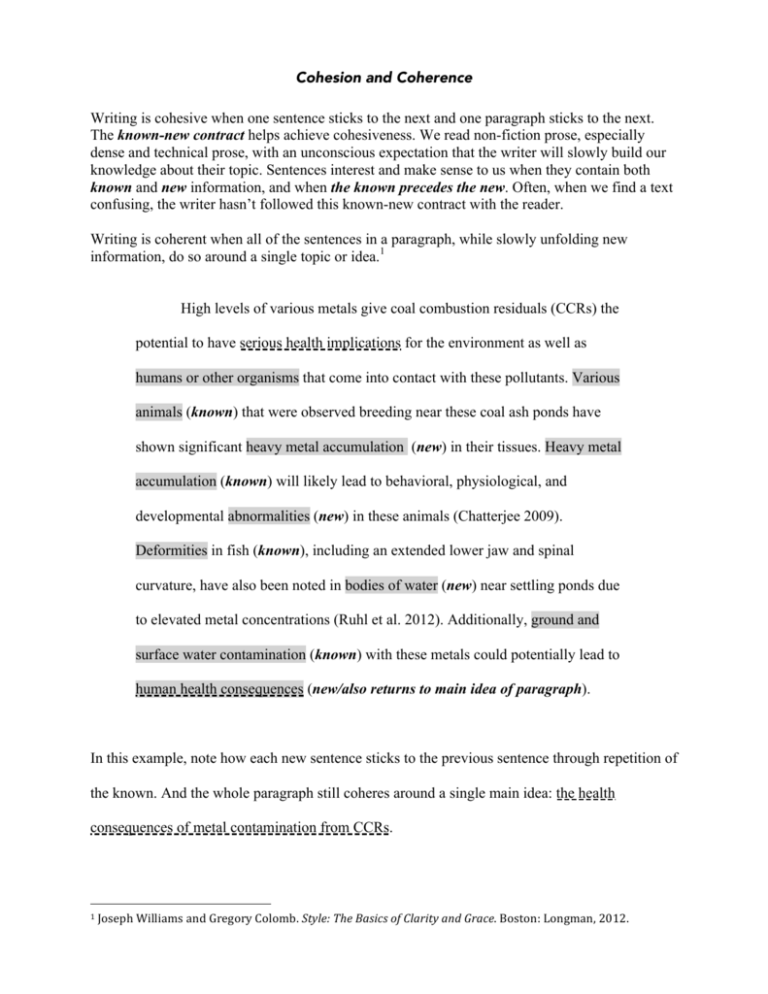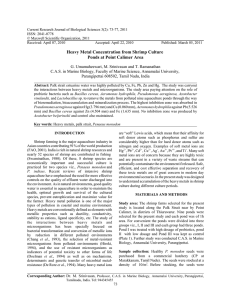Cohesion and Coherence - Warren Wilson College
advertisement

Cohesion and Coherence Writing is cohesive when one sentence sticks to the next and one paragraph sticks to the next. The known-new contract helps achieve cohesiveness. We read non-fiction prose, especially dense and technical prose, with an unconscious expectation that the writer will slowly build our knowledge about their topic. Sentences interest and make sense to us when they contain both known and new information, and when the known precedes the new. Often, when we find a text confusing, the writer hasn’t followed this known-new contract with the reader. Writing is coherent when all of the sentences in a paragraph, while slowly unfolding new information, do so around a single topic or idea.1 High levels of various metals give coal combustion residuals (CCRs) the potential to have serious health implications for the environment as well as humans or other organisms that come into contact with these pollutants. Various animals (known) that were observed breeding near these coal ash ponds have shown significant heavy metal accumulation (new) in their tissues. Heavy metal accumulation (known) will likely lead to behavioral, physiological, and developmental abnormalities (new) in these animals (Chatterjee 2009). Deformities in fish (known), including an extended lower jaw and spinal curvature, have also been noted in bodies of water (new) near settling ponds due to elevated metal concentrations (Ruhl et al. 2012). Additionally, ground and surface water contamination (known) with these metals could potentially lead to human health consequences (new/also returns to main idea of paragraph). In this example, note how each new sentence sticks to the previous sentence through repetition of the known. And the whole paragraph still coheres around a single main idea: the health consequences of metal contamination from CCRs. 1 Joseph Williams and Gregory Colomb. Style: The Basics of Clarity and Grace. Boston: Longman, 2012.









